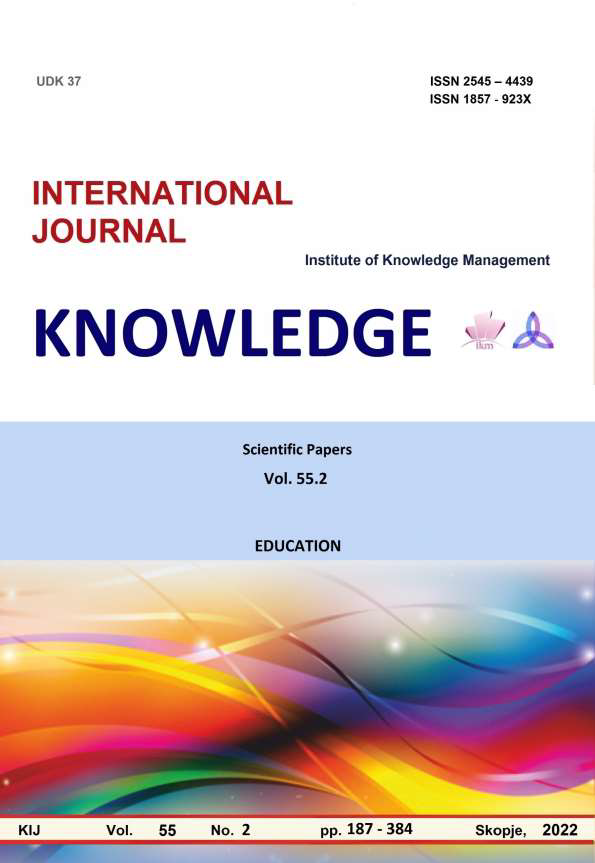DEAF TEACHER/ARTIST AND MAIN TEACHER DUO: NEW PEDAGOGICAL STRATEGY FOR ART AND INCLUSIVE EDUCATION
Keywords:
inclusive education, educational model, pedagogy, Deaf, inclusive mediationAbstract
This paper offers an exploratory vision of some work of art education for the Deaf teacher/artist
participation in the role of educator, incorporating the working together of the main teacher as a hearing person. Our
goal is to introduce an innovative experience and personal reflection on the educational community within the
formal school. Understand the relationship of Deaf people through their artistic manifestations and their different
educational communities, establishing an open, inclusive and tolerant dialogue, with the purpose of improving
certain work situations carried out in different social, artistic and cultural contexts. However, this methodological
approach creates the educational model of traditional duo and traditional duo with inclusive mediator (or inclusive
duo) for artistic-technological teaching in formal schools. This concludes the improvement and the inclusive
methodology application rethinking the problems of the participation of the professional profile with disabilities in
the formal educational system.
References
Ainscow, M. (1999). Understanding the Development of Inclusive Schools (1st ed.). Routledge. https://doi.org/10.4324/9780203016619
Ainscow, M., Booth, T., & Dyson, A. (2004) Understanding and developing inclusive practices in schools: A collaborative action research network. International Journal of Inclusive Education, 8(2), 125–140, https://doi.org/10.1080/1360311032000158015
Ainscow, M., Dyson, A., Goldrick, S., & West, M. (2016) Using collaborative inquiry to foster equity within school systems: Opportunities and barriers. School Effectiveness and School Improvement, 27(1), 7–23, https://doi.org/10.1080/09243453.2014.939591
Bernaschina, D. (2018). Arte en el silencio: nueva experiencia hacia el rol del docente hipoacúsico bilingüe [Art in the silence: new experience towards the role of the bilingual hypoacous[ie] teacher]. EARI Educación Artística Revista de Investigación, (9), 45-55. http://dx.doi.org/10.7203/eari.9.12582
Bernaschina, D. (2019). ICTs and Media Arts: The new digital age in the inclusive school. Alteridad, 14(1), 40-52. https://doi.org/10.17163/alt.v14n1.2019.03
Bernaschina, D. (2021). Interacción pedagógica en las TIC: mediación inclusiva en el aula virtual [Pedagogical interaction in ICT: inclusive mediation in the virtual classroom]. Etic@net. Revista científica electrónica de Educación y Comunicación en la Sociedad del Conocimiento, 21(1), 171-192. https://doi.org/10.30827/eticanet.v21i1.15978
Elboj, C., Puigdellívol, I., Soler, M., & Valls, R. (2006). Comunidades de aprendizaje: Transformar la educación [Learning Communities: Transforming Education] (6ª ed.). Graó.
Monereo, C. (2007). Hacia un nuevo paradigma del aprendizaje estratégico: el papel de la mediación social, del self y de las emociones [Towards a new paradigm of strategic learning: the role of social mediation, the self, and emotions]. Electronic Journal of Research in Educational Psychology, 5(3), 497-534. http://www.redalyc.org/pdf/2931/293121946003.pdf
Puigdellívol, I. (2003). Experiencias de inclusión: Presentación [Inclusion experiences: Presentation]. Revista Aula de Innovación Educativa, 121, 35-36. Recovered from http://hdl.handle.net/2445/44324
Puigdellívol, I. (2016, 22 de junio). Cuando se trabaja bien la inclusión en la escuela, la calidad docente se incrementa por fuerza [Entrevista] [When inclusion is worked well at school, teaching quality increases by force [Interview]]. Recovered from http://www.ub.edu/web/ub/es/menu_eines/noticies/2016/entrevistes/puigdellivol_ignasi.html





